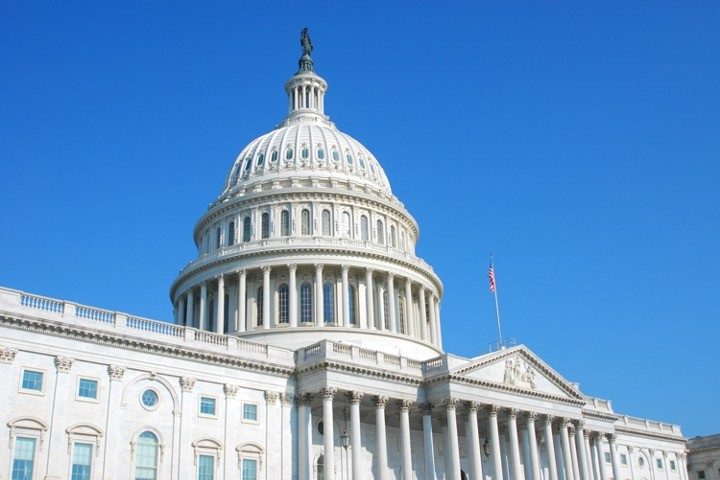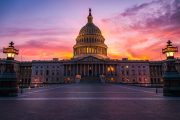
Imagine how different our nation would be if Republicans had long held a significant Senate majority. Left-wing, anti-constitutional justice Ketanji Brown Jackson wouldn’t occupy the Supreme Court. The misnamed Inflation Reduction Act, a destructive “Green New Deal” by another name, would not be law. ObamaCare wouldn’t exist; we wouldn’t be a vote or two away from federalized elections; and, in fact, our legislative landscape would be profoundly different overall. And such a GOP majority would be a reality, today, now — if we’d just retained the Founding Fathers’ formula for choosing senators.
Moreover, a recent analysis finds that this majority would be staggering: a 63-37 Republican advantage that would essentially make left-wing federal bills an endangered species.
Why isn’t this a reality? Because of the 17th Amendment (ratified in 1913, the same “progressive era” year that gave us the income tax and Federal Reserve Act), which prescribed the direct election of senators. Prior to then — meaning, for most of American history — state legislatures appointed our senators.
American Thinker’s J.H. Capron wrote Sunday about the wisdom of the Founders’ model. “The senators were the gating mechanism against a House of Representatives that had a penchant toward foolishness,” he stated. “With the ratification of the 17th Amendment, the individual states gave up that protection they had against the stupidity of the House.”
Put differently, senators’ direct election brought us a step closer to “democracy.” This sounds fine to many modern ears, yet the Founders established a republic for a reason.
As the father of the Constitution, James Madison, warned in The Federalist, No. 10, “Democracies have ever been spectacles of turbulence and contention; have ever been found incompatible with personal security or the rights of property; and have in general been as short in their lives as they have been violent in their deaths.”
Remember that as the admittedly clichéd example goes: “Sometimes democracy is just two lions and one lamb voting on what to have for dinner.”
One problem with senators’ direct election, many aver, is that it reduces the chances these politicians will seek to safeguard states’ powers; that is more likely, the theory goes, when state representatives are choosing the senators who’ll represent their state. Yet however valid this theory, there is a better argument for the Founders’ model. But before getting to that, let’s examine how it would alter the current Senate landscape.
The body presently has 50 Republicans, 48 Democrats, and two Independents who caucus with the latter. With Vice President Kamala Harris (D) empowered to cast a tie-breaking vote, this gives Democrats Senate control.
Yet this doesn’t reflect state legislatures, whose composition, Capron informs, is as follows:
- 30 states, both chambers Republican
- 17 states, both chambers Democrat
- 2 states split between chambers
- 1 state nonpartisan (Nebraska — unicameral)
Capron then continues, explaining how the Founders’ formula would alter the current Senate. “I’m going to make some assumptions,” he writes. “Both chambers of the Republican states choose two Republican senators. The fully legislatively Democrat states (both chambers) choose two Democrat senators. The split chambers choose one Republican and one Democrat senator. Nebraska, unicameral, nonpartisan, chooses one Republican and one Democrat senator.”
This would leave the Senate with 63 Republicans and only 37 Democrats.
Capron correctly points out that senators’ direct election often allows urban centers — controlled by one party, the Democrats — to largely determine who’ll represent their state in the Senate. Some consider this “democratic.” It surely is, too, in the sense of bringing us closer to a government that may be “violent in its death.”
Yet there’s another factor: This system enables vote fraudsters to choose our senators — as urban centers are where virtually all the electoral fraud occurs.
The Founders’ system eliminates this problem because under it, state representatives essentially become electors. No amount of votes stolen for a Democratic Party candidate in a left-wing district could alter the Senate-choice outcome because, regardless, each state representative would have just one vote when appointing senators.
The two systems can be contrasted by considering Georgia, which “has a Republican trifecta and a Republican triplex,” writes BallotPedia. “The Republican Party controls the offices of governor, secretary of state, attorney general, and both chambers of the state legislature” — by wide margins. Yet Georgia’s two senators are far left radicals Jon Ossoff and Raphael Warnock.
Not only is this due to the Fulton County (Atlanta area) vote, but is likely the result of rampant electoral fraud there. Ossoff and Warnock would not be in office under the Founders’ system.
That system was the fruit of careful consideration, too. As a commenter under Capron’s article wrote, astutely:
When the Founders debated, argued and articulated the foundation of government, undoubtedly they considered the structure of Roman government, which started out as a balance between the many (the people); the few (the Aristocracy), and the one (the Consul (or leader) [sic]. The U.S. governmental structure mirrored that of Rome with the separation and recognition of the People (Congress), the States (Aristocracy) and the One (the President).
The reason for this balance can be found in history. The Founders had already experienced the rule of One (Monarchy) and wanted no part of it, while other forms of governance ultimately led to decline and anarchy (where we are now).
Again, though, senators’ direct election is far more “democratic,” which perhaps explains why it benefits the Democratic Party. And since democracy tends to devolve into tyranny, it also suits the aspiring tyrant just fine.



